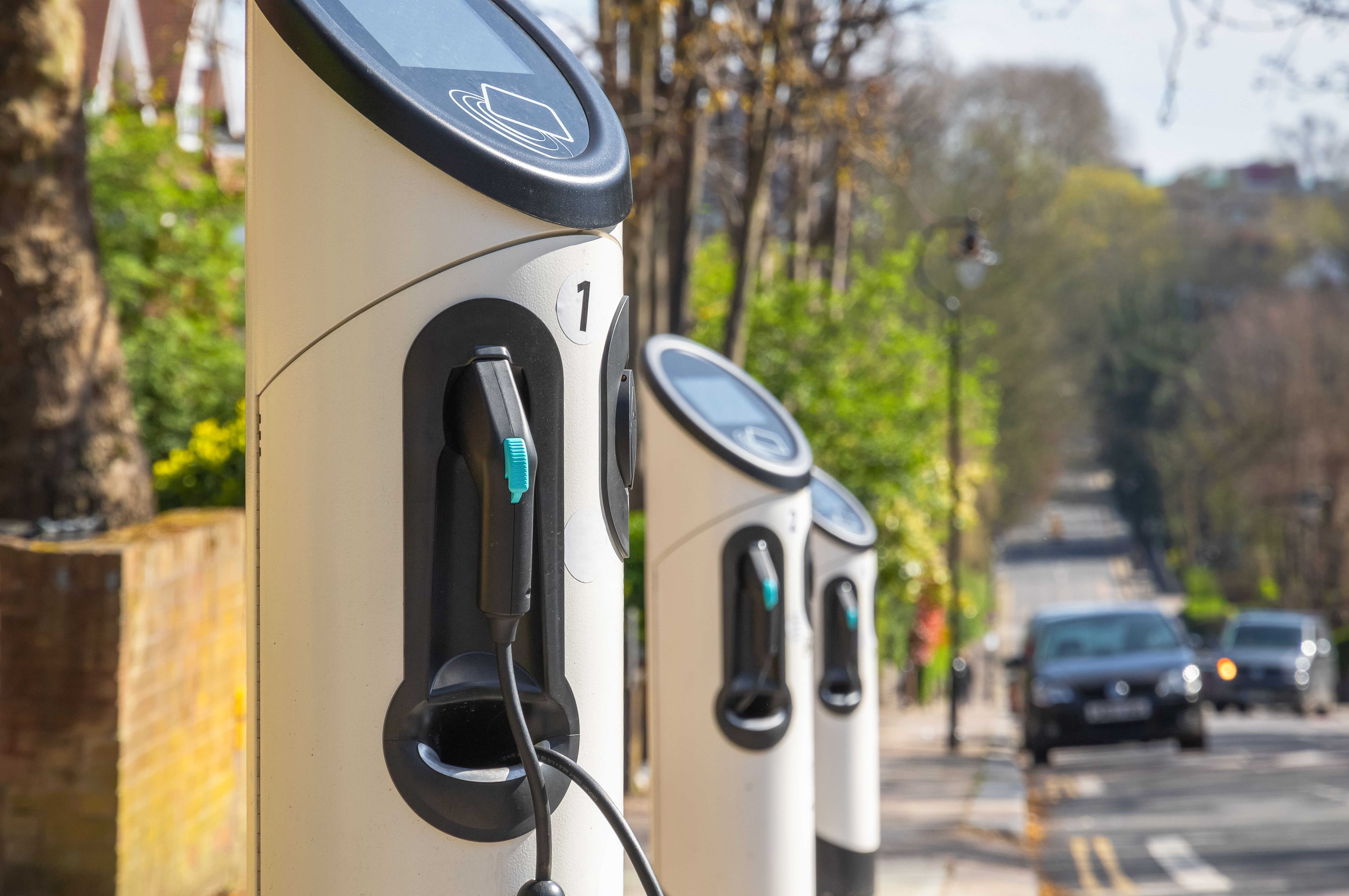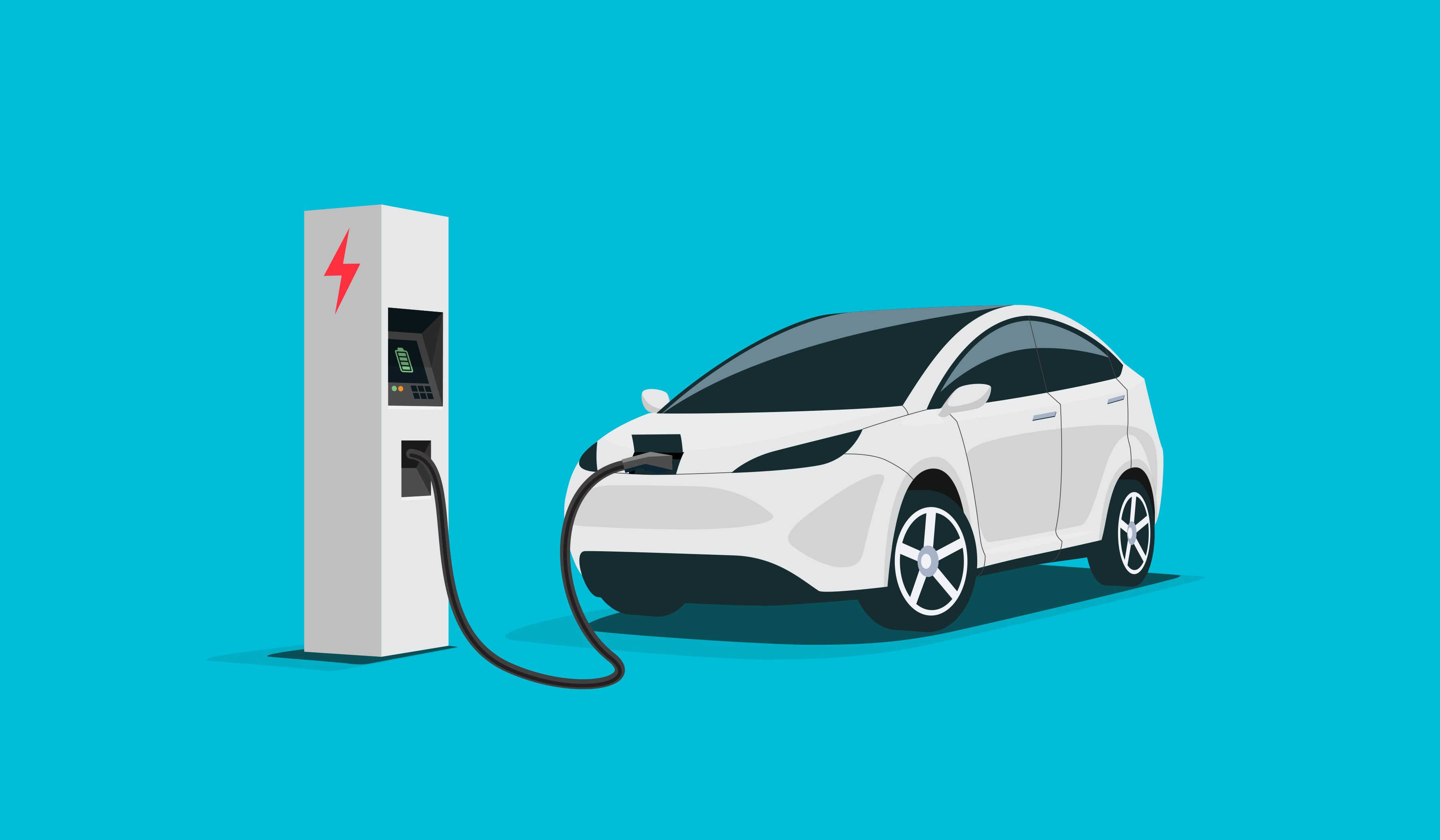
The replacement of the UK’s fleet of petrol and diesel cars and vans with electric vehicles is one of the key points of the Department for Transport’s Transport Decarbonisation Strategy (DfT, 2021), and electric vehicle uptake has been accelerating in recent years, with more than 265,000 electric vehicles registered in 2022, a growth of 40% on 2021. To increase electric vehicle uptake across the whole population, convenient and affordable public charging infrastructure needs to be widely available. In England, local authorities have been tasked with developing local charging strategies to ensure this infrastructure is available for residents, businesses, and visitors.
Join other savvy professionals just like you at CIHT. We are committed to fulfilling your professional development needs throughout your career
The Chartered Institution of Highways and Transportation (CIHT) with the Office for Zero Emission Vehicles (OZEV) held a workshop in 2022 that brought together experts to explore some of the challenges around the electric vehicle charging infrastructure roll-out, with a particular focus on site selection.
This report provides a summary of what was discussed during the workshop, with additional comments from CIHT.

As of October 2022, the Electric Vehicle Homecharge Scheme (EVHS) had funded the installation of 376,495 domestic charging devices which is over 10 times more than the 34,637 public chargepoints currently available. There is an estimated need for 400,000 public EV chargepoints by 2030.
A ban on the sale of new petrol and diesel cars will come into force in 2030 (or 2032 in Scotland) as part of the Department for Transport’s Transport Decarbonisation Strategy (DfT, 2021).
The uptake of electric vehicles (EVs) is already accelerating with ownership in the UK almost tripling in the last two years. However, current data suggests that a large majority (86%) of EV owners charge their vehicles at home, and the biggest factors holding back motorists from switching to EVs were high costs and a lack of local charging points. This will need to change if the move to EVs will have a role in the UK meeting its Net Zero Targets.
Back in 2010 the Government launched its (now withdrawn) Plugged-In Places (OZEV, 2013) guidance, which appeared to focus on increasing sales of EVs but lacked a clear strategy for site selection. Phil Blythe, former Chief Scientific Adviser for the Department for Transport and Professor of Intelligent Transport Systems (ITS) at Newcastle University, commented that “Initially the Plugged in Places funding saw charges put almost in any place where space permitted by local authorities, now the challenge is ensuring that charging places are installed in strategic places where they are well used.”
Now, Taking Charge (DfT, 2022) the Government’s EV infrastructure strategy, gives local authorities the task of developing strategies to ensure that convenient and affordable public charging is available for residents, businesses and visitors. The strategy recognises that a variety of public chargepoints are needed which differ in both location and speed.
Our workshop participants identified regulation as one of the most challenging issues they faced when developing and implementing charging infrastructure strategies. This is a multi-faceted issue including:
Regulatory barriers that can prevent, or make it difficult to install a chargepoint include:
On the other hand, some participants identified a need for more EV-specific regulations and guidance to make site selection and installation of chargepoints much easier, such as:
A key enabler would be a new regulation to specify the location of charging ports on vehicles.
Currently, the location of the charging port on EVs differs between manufacturers, which can be challenging for local authorities and their partners. For example, some cars have a charging port at the front or rear of the car which makes it easy to design end-on chargepoints, whereas others have it at the side of the car where a traditional petrol cap would be found.
A preference for end-on charge ports was reflected by some workshop participants as this makes it more efficient to fit in multiple charging bays side-by-side and is more suited to the traditional design of carparks. However, due to the current, differing designs of cars this approach would not be appropriate for all users, hence the call for EV design regulations.
Overall, it appears that the current regulatory framework facing local authorities does not reflect their needs, nor the situations in which regulations are applied. A revised approach that looks to accommodate future infrastructure is needed if successful decarbonisation of the fleet is to happen.

Side-on charging port

End-on charging port
The next common group of problems identified were issues related to the electricity grid and distribution network operators (DNOs) – the companies that operate the regional electricity networks that connect to the National Grid.
Examples of the types of problems faced were:
The workshop concluded that staffing and capacity issues affecting both local authorities and DNOs were the root cause of these problems. Participants from private organisations, who work closely with both local authorities and DNOs, suggested that local authorities need a dedicated person within their teams to initiate contact and lead liaisons with , thus providing a new way to form clarity between the two parties.
Due to the long turnaround time on applications, it was also suggested that a good approach from local authorities would be to get in touch with their DNO as early as possible during the design and planning stage. local authorities should use this opportunity to enquire where the DNO would prefer for grid integrations or additions to be made, which ought to prevent time and resources wasted investigating a site where it would be impossible to install to a chargepoint.

Managing the competing demands for space between charging infrastructure and other uses for street and road space was identified as a third challenge.
Participants from local authorities explained that their approach has often been to prioritise off-street charging infrastructure (park and ride, car parks at shopping centers/libraries etc.) before moving to on-street charging. On-street charging is far more difficult and expensive for local authorities to provide and can require traffic regulation orders (TROs) and other highways approval processes.
More broadly, prioritising off-street charging can reduce competition within local authorities for street and road space. An example was given that priorities for parking bays vary between departments and some want them to be used to provide cycle hubs and e-scooter parking rather than EV chargepoints.
Maintaining footway space is also a vital factor when it comes to chargepoint site selection – chargepoints must be placed in a way that will not cause trip hazards or narrow the footway.
It was suggested that developing a comprehensive asset management database to better understand land use would help all stakeholders better manage competition for public space.
A fourth issue identified at the workshop was the need for more effective collaboration and sharing of lessons learned between local authorities.
New products and innovations are constantly being produced to try to solve the problem of on-street charging such as the use of pop-up chargers and gullies. However, without evidence that these solutions work, many budget constrained local authorities will be hesitant to embrace them. Similarly, some rural or less-affluent areas are less likely to be considered as part of testing trials by private sector providers and risk being left behind when it comes to developing EV charging infrastructure. Participants therefore suggested that those local authorities who can afford to trial alternative or new EV chargers should ensure they share their lessons learnt in an honest and open way to help inform other authorities and the sector as a whole.
Predicting future user demand is also a difficult subject for local authorities. Many local authorities, sub-national transport bodies and power networks have developed their own mapping tools to predict user demand, however, the ability to benefit from these tools is dependent on access to budgets and a skilled workforce. This creates another area where regional disparities can cause areas to be left behind. The workshop participants called for a communication tool or platform to be created to allow local authorities to learn from each other over the different approaches to forecasting demand.
Charging infrastructure to support the transition from petrol and diesel cars to electric vehicles is a vital part of a decarbonised transport system. Whilst the initial steps in this transition have focused on making funding available for chargepoints, the next steps will be to make sure this money is invested wisely to ensure we build quality EV infrastructure for the whole country.
Sign up to the APM Newsletter.
{{item.AuthorName}} {{item.AuthorName}} says on {{item.DateFormattedString}}: